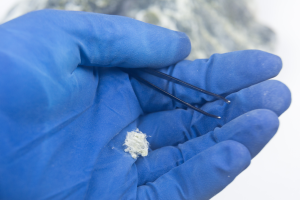 Asbestos exposure is often talked about in the news as an increasing number of people are being diagnosed with mesothelioma or other asbestos-related illnesses. But what exactly is asbestos exposure, and how can we prevent it from becoming an issue in our work environment?
Asbestos exposure is often talked about in the news as an increasing number of people are being diagnosed with mesothelioma or other asbestos-related illnesses. But what exactly is asbestos exposure, and how can we prevent it from becoming an issue in our work environment?
Below, this asbestos removal contractor in Schaumburg, Illinois is going to look at the primary and secondary sources of exposure to asbestos in the workplace, as well as ways that you can protect yourself against this dangerous threat to your health and safety.
Understanding Primary and Secondary Asbestos Exposure
Asbestos is a naturally occurring mineral that was widely used for its high resistance to heat, fire, electricity, chemicals, and water. The most common use of asbestos was in construction materials such as insulation for pipes or electrical wiring, ceiling tiles, and roofing. Asbestos was considered an inexpensive material that could be used for any number of applications because it could resist almost any type of damage.
However, it was not long before the health risks associated with the mineral were exposed, and the product was banned. Now, more than 30 years later, asbestos can still be found in older buildings that have not yet been treated by an asbestos removal contractor in Schaumburg, Illinois.
Asbestos exposure can happen to anyone who encounters asbestos-containing materials. However, it is possible to contract an asbestos-related disease when exposed to significant amounts of airborne fibers, which may occur during demolition or renovation projects. These exposure levels are referred to as primary exposure because they come from directly handling or working near products that contain asbestos. Secondary exposure occurs when people encounter surfaces contaminated by asbestos products.
How to Tell If You Were Exposed to Asbestos
Many people who were exposed to asbestos may not even know it. One way you can tell if you have been exposed is by looking for signs of lung disease, such as a chronic cough, shortness of breath, or wheezing. The best way to find out is by getting tested. If you are concerned about possible exposure to asbestos, you can always have your property inspected by an asbestos removal contractor in Schaumburg, Illinois.
Ways to Protect Yourself
- Wear gloves and a mask when removing asbestos-containing products.
- Reduce dust by using wet methods of removal or by using water spray while cutting, brushing, or sanding.
- Do not eat, drink, smoke, or chew gum while working with asbestos materials.
- Vacuum the work area regularly.
- Remove your clothes as soon as you finish work and either launder them at home or take them to a dry cleaner for special treatment.
- Take showers after work and use soap to remove any traces of asbestos fibers from the skin.
- Have medical examinations every six months to check for signs of mesothelioma and other cancers linked to asbestos exposure.
- Hire an asbestos removal contractor in Schaumburg, Illinois for a permanent solution to the problem.
If you are worried about asbestos exposure in your workplace, it is important to understand how it can occur. Just because there is no visible asbestos does not mean it has not been released into the air. If you work with or around materials that could be contaminated, you could be at risk for secondary exposure. To limit your chances of asbestos exposure, you should hire a professional asbestos removal contractor in Schaumburg, Illinois when having it removed.
Looking for an Asbestos Removal Contractor in Schaumburg, Illinois?
Are you ready to have asbestos removed from your office or commercial property? If so, and if you’re looking for the best asbestos removal contractor in Schaumburg, Illinois, look no further than the professionals at Axis Response Group. Contact us today at (773) 427-6811 to schedule a free consultation.

0 Comments